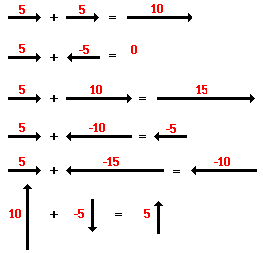1. First, determine each of the vector's direction. If it's moving eastwards or upwards, it has a positive and if it's moving west or downwards, it's negative. If a component has a negative sign (-), its magnitude is subtracted, rather than added.
2. Then, visualize or draw the diagram of the vectors and make it into a triangle.
3. Next, we use the Pythagorean theorem "a² + b² = c²" to calculate the unknown side.
4. After finding the length of the missing side, find the angle using the "SOHCANTOA" rule to find the angle. Most of the time in vectors, Tangent is used most frequently. The equation will be θ=tan-1(b/a), where θ is the angle that the resultant makes with the x-axis or the horizontal.
5. Finally, find the direction the vector is going. The direction will always be from the point of the 


No comments:
Post a Comment